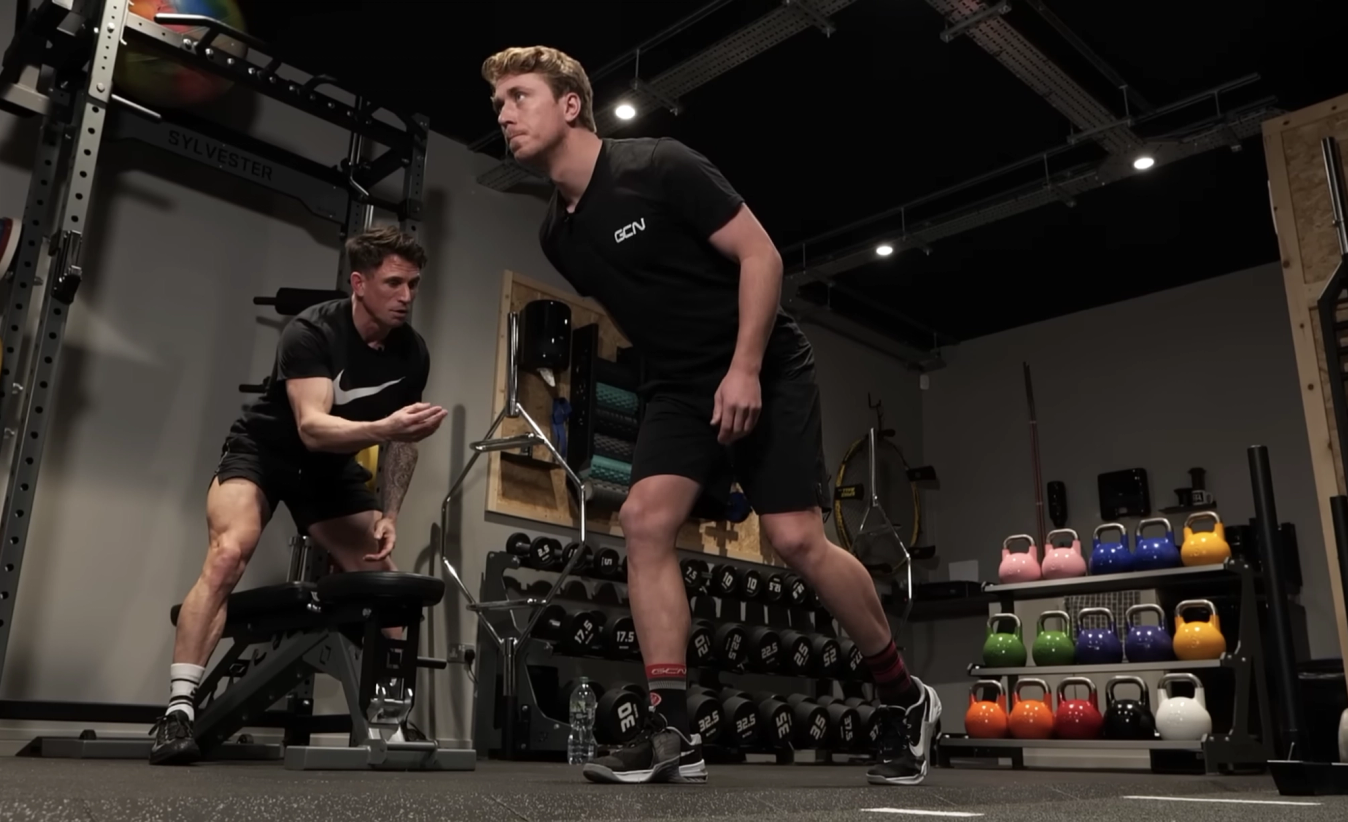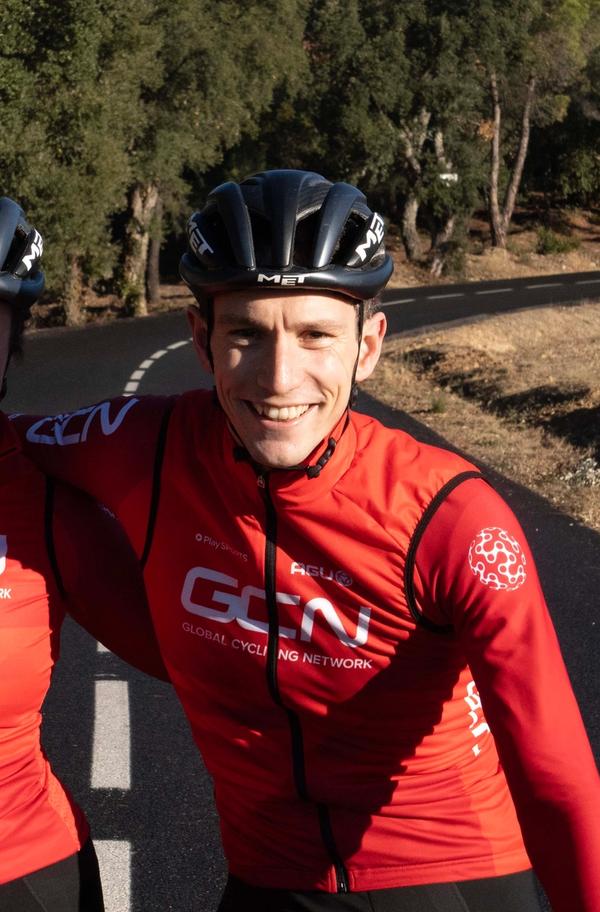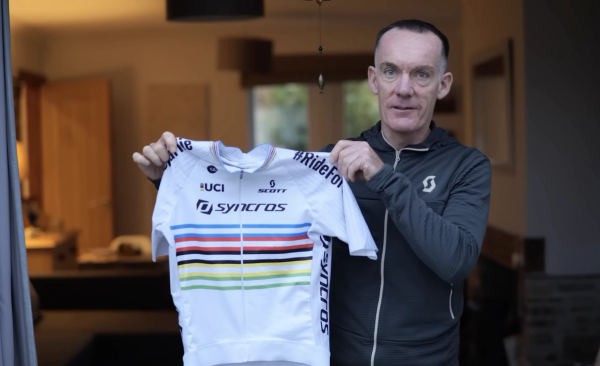Is base training in winter a waste of time? Neal Henderson explains
Over the years, we’ve all been told long, slow miles in the winter are best. We spoke to an expert to find out whether base training actually makes you fitter.
James Howell-Jones
Junior Writer
The traditional, old-school training advice is clear: if you want to get properly fit, you need to do base training. And by base training, we mean long rides at a low intensity – ideally at the kind of pace you can keep a normal conversation at. These long, easy rides are intended to build up your aerobic capacity and get you conditioned to spending time on the bike, so your body is ready for harder, higher-intensity training in the spring and summer.
We’re not sure about you, but spending hours and hours riding slowly through cold and rain doesn’t sound like a barrel of laughs to us. So before we dig out our rain capes and overshoes, it’s worth asking: is this old-fashioned training methodology still relevant today? Do you really need base miles to build peak fitness?
What is base training for?
To understand whether or not we need base training, we need to know what it’s for. Essentially, base training is designed to do three things.
Firstly, it’s about conditioning your body to cycling and being on the bike. Long hours on the saddle will get you settled into your position, into the motion of pedalling and into the unique stresses and demands of cycling.
Secondly, it’s designed to maintain your fitness through the off-season. You’re probably not going to be the fittest you’ve ever been in the off-season, but base training can help to hold onto the gains made in the previous summer, all while letting your body recover in preparation for the next training phase.
Finally, base training is designed to strengthen your tendons and prepare your body for the higher-intensity training of the peak season. If you just launch into high-intensity training without any base, you might injure yourself. Generally speaking, this will be because your tendons and ligaments aren’t strong enough to cope with high-intensity training. Base training is about preparing your body for high-intensity training by toughening up tendons, ligaments and joints.
How can we achieve these goals?
We spoke to Neal Henderson, a seasoned WorldTour coach and now the head of sports science at Wahoo. He suggested a few different ways that cyclists can work on those three main objectives during off-season training.
1. Traditional base miles

© GCN
Traditional base miles: frosty mornings and short days
First of all, the classic approach, which is still the norm in the pro peloton. Steady miles help to get riders used to their bikes, to keep up their fitness, and to allow them to recover and prepare for the higher-intensity training of the peak season.
Henderson suggests that for most riders, this isn’t necessary. In the pro peloton, the traditional base training methodology is losing popularity. According to Henderson, this is because, for experienced riders, those conditioning and strengthening effects of base training are less relevant and less effective.
“When you have an athlete who has been training for a long period of time, it may not be as beneficial to spend three months at a very low intensity,” he said.
“You're not going to see a lot of change in fitness or performance, and so there have been some differences in approach lately where some folks will do a little bit more intensity earlier than they have in the past.”
So who will benefit from base miles? New riders, according to Henderson. If you’re new to the sport, high volume, low intensity riding is still really important.
“Somebody who's just getting started definitely does need to establish some level of an aerobic foundation. Riders and athletes who have several years of foundation under their belts can accelerate adding in that intensity, though if you're a very rank novice in cycling, you do need to establish some foundation.”
2. Utilising a range of riding intensities

© GCN
Mixed-intensity riding can make winter cycling more appealing
If you’re an experienced rider who won’t reap loads of benefits from base training, Henderson suggests doing a mix of low, medium and high-intensity training in your off-season schedule.
This is the kind of training mix that more and more riders are using to great success in the pro ranks. These days, some of the best cyclists in the world are participating in more and more racing disciplines, turning them from highly seasonal racers to evergreen performers. Just look at the success of Marianne Vos or Wout van Aert.
While the off-season isn’t the time to push yourself to new depths in your training, it is an opportunity to train at a range of intensities, and to work on weaknesses (say, climbing or sprinting) that you wouldn’t have time to work on during the height of your season. As you do those sessions, you’ll be maintaining and even improving your fitness, as well as conditioning yourself on the bike and improving your tendon integrity.
3. Strength training

© GCN
It never rains in the gym
For resolving weaknesses, injuries and imbalances, and to properly prepare your body for the demands of summer training, strength training in the gym can be really beneficial. Years ago, this would be a real no-no, but more and more riders are seeing the benefits of gym work as part of their winter training.
A well-designed training session in the gym can make you into a stronger, more resilient rider. Best of all, it’s all indoors, meaning you won’t have to get soggy in the rain to get ready for the race season.
Rethink your approach to base training
Neal Henderson’s view on off-season training is unconventional, and goes against the polarised training approach that we’re hearing a lot about these days. However, Henderson’s experience training some of the best athletes in the peloton, and the success of this ‘year-round’ approach in athletes like Vos and Van Aert, shows that it works.
However, for us normal people, who may only have a few hours a week to train, this approach can still be the right one. It’s not just the reserve of the pros. A lot of us are looking for maximum bang for our buck when training, and there’s no denying that long, slow miles just don’t tick that box. With a more intelligent approach, you can achieve those classic goals of winter training, while improving your fitness and strength, and while having a better time training.
However you structure your training, one thing is clear: you need variety throughout the year. There are advantages to doing longer, slower rides, even if it’s simply to add variety to your training calendar. A period when you back off your full-blown training routine and let your body recover is really important, but does that period have to be in the winter?
Perhaps you could flip the traditional approach around, and do your long, slower rides in summer, then use winter to work on peak power and higher intensity-stuff, either on Zwift or the indoor trainer, or by belting up your local climb a few times a week. If you’re looking to become a rounded, fit cyclist, but you’re not training for a summer event, there’s no need to tie yourself to a conventional season.
Ultimately, for most cyclists, the best training we can do is the training we enjoy. If we enjoy doing it, we’ll do more of it, and we’ll get faster. Therefore, if you enjoy long, steady rides, get out and ride. Equally, if you prefer to go for an hour-long blast, that’s fine too, even if it’s the middle of winter. If you’re still struggling to reach new heights with your performance, treat yourself as a one-person experiment: try different things for a few weeks at a time, measure the results, and work out what works best for you.











